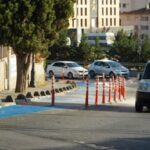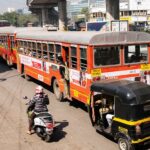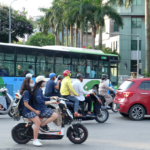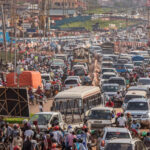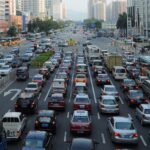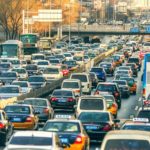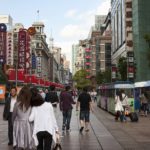Posts tagged with 'transport policy'
Although it is widely recognized that gender disparities are echoed in the design and operation of urban transportation systems, gender-responsive transportation planning is still in its early stages. Drawing from the TOPUK project, which stands for “Women Accessing Public Transport,” ...

In Africa, as elsewhere, advances in computing power, data storage, and sensor and satellite technologies have unleashed unprecedented opportunities but also challenges. The mobile phone has become a powerful tool for generating vast amounts of data. This data can, in ...

The momentum towards low-carbon and sustainable transport is growing globally, but the sector still lags behind many others and each country faces a unique path to travel. Political landscapes, regulations, industry interests, market set-ups, financial resources and social considerations all ...

Transportation is a crucial enabler of economic development, providing people access to markets, employment, education, and health services. In addition to these development benefits, improving transport systems by making them cleaner, safer, more inclusive and more resilient accelerates climate action ...

This is the third installment in a series of articles documenting lessons learned across NDC-TIA country activities, to be published throughout 2022. In Vietnam, a country home to 97 million inhabitants, there are 65 million registered motorcycles and mopeds,1.5 million ...

Climate change is the defining challenge of our time, and clean energy and green transport are the keys to addressing it. Less than two decades ago, energy emissions seemed to be spiraling out of control as countries were locked into ...

As people stay home and city streets turn quiet, the COVID-19 pandemic has disrupted the global vehicle market. While many urban experts fear a turn to personal cars in lieu of public transport, few people so far are actually purchasing ...

Market disruptions like shared electric scooters can be great for cities, getting people out of their private cars and enhancing connectivity and accessibility. But while e-scooters offer a practical and more sustainable new form of transportation, they also bring concerns ...

Over the past 50 years, transport planners have tended to focus on reducing congestion to improve people’s mobility within cities. But increasing road capacity, vehicle speeds and parking spaces have not solved urban traffic. Building more roads and parking just ...

Beijing is one of most congested cities in the world, with over 6 million cars on its roads. In 2017, drivers spent on average just under three hours in traffic each weekday. Data from the navigation app AutoNavi shows Beijing ...

China’s top-down system of decision-making has been the root of many transformative changes in the past. So why has it recently been so hard to rally city leaders behind low-carbon transport? The answer has two sides: institutional complexity and lack ...

In a recent study, the International Energy Agency (IEA) projected that the area required for parking in India if motorization trends continue as they are today will reach between 10,000 and 20,000 square kilometers (3,861 to 7,722 square miles) by ...

In conjunction with the Transportation Research Board, the Transportation Research Arena and Women’s Issues In Transportation, the 5th International Conference on Women’s Issues in Transportation is calling for abstracts to be presented at the conference in April 2014 in Paris. The conference ...










